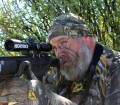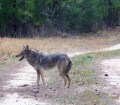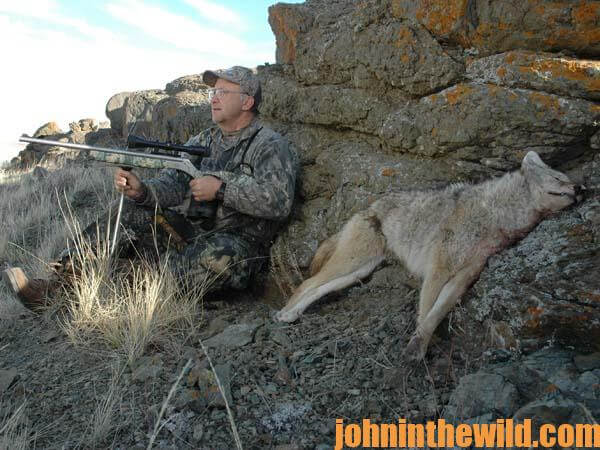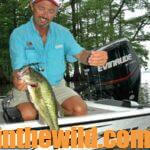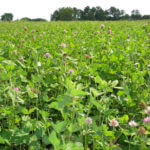John’s Note: By harvesting coyotes, foxes, bobcats, raccoons and possums, you can have more deer, turkeys, quail, pheasants, squirrels and rabbits on your hunting property. We all know the advantage of planting supplemental food plots, fruit trees, nut trees and shrubs for wildlife. We also selectively harvest our deer herds and provide minerals for deer and turkey. But one important component of managing your lands for more wildlife is reducing the number of predators on the properties. Al Morris, the host of “FOXPRO Furtakers” (http://outdoorchannel.com/foxpro-furtakers) on the Outdoor Channel, will tell us how and why harvesting predators will increase the number of game animals and songbirds on the lands you hunt. Morris, who lives in Springville, Utah, has been a predator hunter for 30+ years. Morris and his partner, Garvin Young, are the only hunters who have won the World Predator Calling Championship three times. Morris says, “I really like all the Mossy Oak patterns, since they suit all types of terrain, and I hunt all over the United States. When I’m hunting west of the Mississippi River, Mossy Oak Brush (http://www.mossyoak.com/camouflage/brush.aspx) is my favorite. In the Midwest and most of the East, I prefer Mossy Oak Break-Up Infinity (http://www.mossyoak.com/camouflage/breakupinfinity.aspx).”
 In the past, predator hunting has been popular west of the Mississippi River. Many eastern hunters have told me, “Because we can’t see as far in the East as hunters can in the West, we can’t find and take as many predators.” I’ve spent a good bit of time in the last few years hunting coyotes in the East, and I can tell you for certain there’s no difference in hunting coyotes in the East and the West. One time when I hunted in Alabama, I set-up to call and take coyotes just like I would in Utah or Nevada. I set-up where I could see the most property. In the West, we have hills, brush and sage brush, but in the East are agricultural fields, pastures, clear-cuts, power-line right-of-ways, gas-line right-of-ways and other long strips of clear land running through wood lots, fields, pastures and other terrain. I set-up on the edges of fields and pipe lines or on little creeks, rivers and streams. I set-up my FOXPRO caller on my side of the creek and looked for coyotes to come to the edge of the creek before trying to cross it.
In the past, predator hunting has been popular west of the Mississippi River. Many eastern hunters have told me, “Because we can’t see as far in the East as hunters can in the West, we can’t find and take as many predators.” I’ve spent a good bit of time in the last few years hunting coyotes in the East, and I can tell you for certain there’s no difference in hunting coyotes in the East and the West. One time when I hunted in Alabama, I set-up to call and take coyotes just like I would in Utah or Nevada. I set-up where I could see the most property. In the West, we have hills, brush and sage brush, but in the East are agricultural fields, pastures, clear-cuts, power-line right-of-ways, gas-line right-of-ways and other long strips of clear land running through wood lots, fields, pastures and other terrain. I set-up on the edges of fields and pipe lines or on little creeks, rivers and streams. I set-up my FOXPRO caller on my side of the creek and looked for coyotes to come to the edge of the creek before trying to cross it.
Another secret to success in taking coyotes in the East is to set-up a caller facing into the wind and take a stand 30- or 50-yards downwind. Instead of hunting with a rifle, I hunt with a shotgun. These coyotes always try to circle downwind of the caller. They prefer to get downwind of their prey to pick-up the scent of the animal before they move in and attack.
One of the reasons hunters don’t take coyotes in regions with a lot of timber and thick cover is most television shows about predator hunting show the coyote coming in straight toward the caller or crossing in front of the caller when the hunter takes them. To make good television, the viewer needs to see the hunter, the caller and the predator in the shot. However, I’ve learned that I take more coyotes in heavily-timbered or thick terrain by putting the caller 30 to 50 yards in front of me and then making the shot on the coyote when he tries to get downwind of the call. I believe eastern predator hunters can call-in more predators than in the West, but because they don’t set-up downwind from the caller, the animals will circle the call, smell the hunter and leave without being seen. If the predators have been hunted at all, they almost always circle downwind.
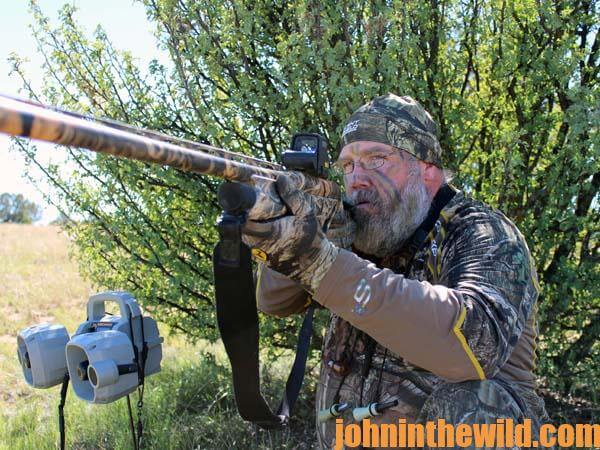 If I’m hunting with a partner, I’ll have him set-up 50 yards from me or 100 yards from the caller. If a coyote circles me, the second hunter can take the predator. When using this technique, be extremely cautious, and always know where both hunters have taken stands. Safety always has to be your first consideration. I’m often asked what shotgun and shells I use to shoot predators. I use a Benelli shotgun, but any 3-inch magnum shotgun should be effective. We use Hornady (http://www.hornady.com/) buckshot that’s a coyote load. The other piece of equipment I feel is vitally important is the EOTech sighting system (http://www.eotech-inc.com/). We can acquire the target much faster when the predator is running than we can with other sighting systems.
If I’m hunting with a partner, I’ll have him set-up 50 yards from me or 100 yards from the caller. If a coyote circles me, the second hunter can take the predator. When using this technique, be extremely cautious, and always know where both hunters have taken stands. Safety always has to be your first consideration. I’m often asked what shotgun and shells I use to shoot predators. I use a Benelli shotgun, but any 3-inch magnum shotgun should be effective. We use Hornady (http://www.hornady.com/) buckshot that’s a coyote load. The other piece of equipment I feel is vitally important is the EOTech sighting system (http://www.eotech-inc.com/). We can acquire the target much faster when the predator is running than we can with other sighting systems.
When you start calling predators, especially in the East, you’ll see numbers of coons, gray foxes and red foxes. These predators feed on turkey eggs, quail eggs and ground-nesting game animals. If you remove a good number of these animals every year as well as coyotes, you can increase the numbers of turkeys, quail, song birds and upland birds on your property. Every now and then, you’ll get a bobcat.
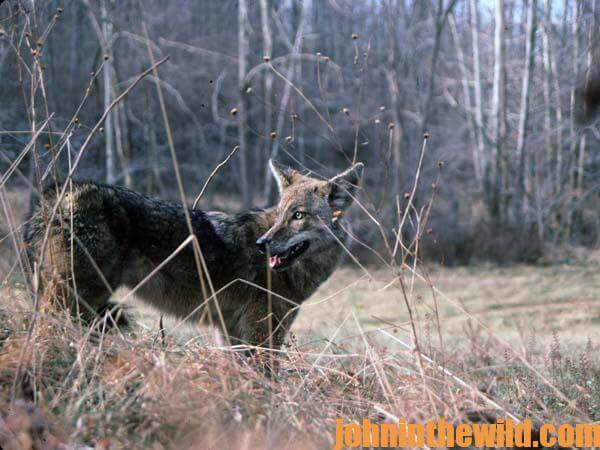 To learn more about hunting and fishing, see John E. Phillips’ eBooks and print books at www.amazon.com and www.barnesandnoble.com.
To learn more about hunting and fishing, see John E. Phillips’ eBooks and print books at www.amazon.com and www.barnesandnoble.com.

